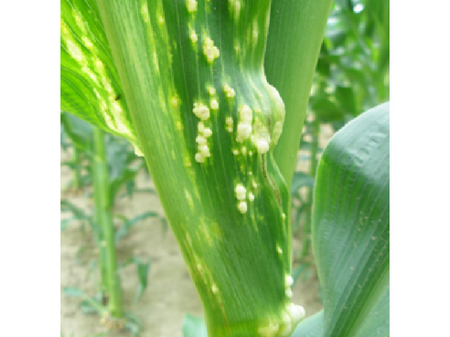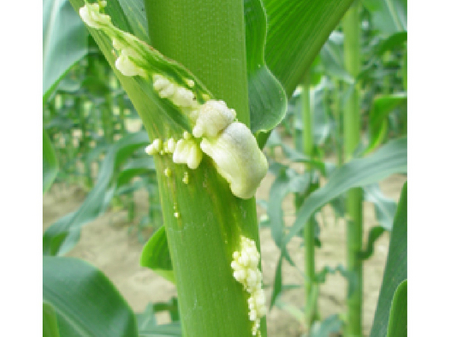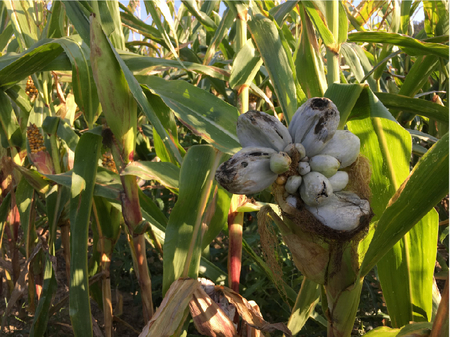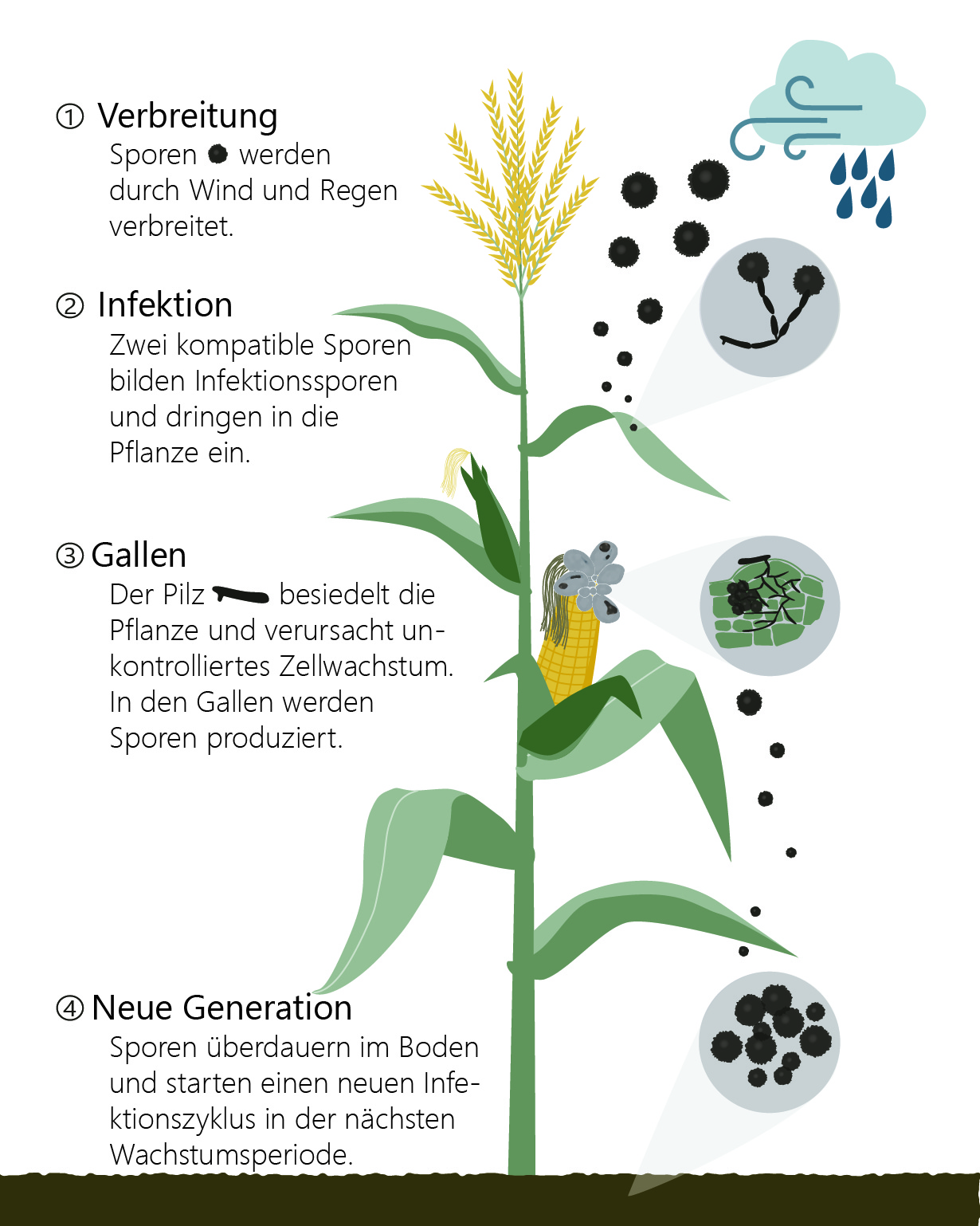Corn smut
Ustilago maydis
Biology
The causal agent of corn blight, Ustilago maydis, belongs to the fungal family Ustilaginaceae and is an obligate parasite. This means that it can survive during the growth phase only in association with a living host. After infection, the growth of the blight is linked to the growth of the host tissue, which means good growing conditions for the corn also means good growing conditions for the blight. Only when the corn tissue has fully matured can new blight not develop.
Damage symptoms
This disease is a very conspicuous phenomenon due to the formation of the typical burnt bumps. The growths can develop on all above-ground organs of the corn plant and are initially covered with a silvery shiny tissue skin. Inside these bumps at this stage is already a black, slimy spore mass. In the course of further growth, this skin ruptures and the now powdery spore contents of the fungus are carried by rain and wind into the soil or onto other corn tissue.



Propagation and transmission
Infection usually occurs from permanent spores (teleutospores), in the form of which the fungus overwinters in the soil. In this form, the fungus can survive in the soil for several years (up to 10 years). Transmission of the spores by seed is also possible, but has little significance because of the standard seed dressing. In spring, the permanent spores germinate in the uppermost soil layer and form infection spores (basidiospores), which reach the corn plants by means of wind or rain splash. The spores germinate on young plant tissue and the typical gall tissue is formed. Injuries caused by hail, frit flies, storms or other factors such as late frosts or herbicide applications promote the invasion of the fungus.

Prevention and control
Control with fungicides is not possible and also not economical
The spores adhering to the grain can be killed by dressing
Cultivation of less susceptible varieties
Control of the frit fly (see list of plant protection products approved in Austria)
Avoiding injuries during maintenance work
Last updated: 08.04.2022
automatically translated